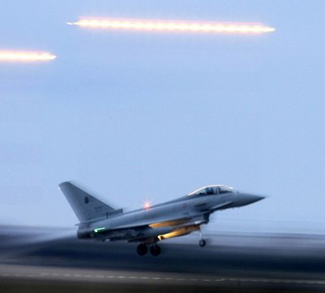Money-spinning, no matter how careful and meticulously planned by the launderer, leaves digital trails. These trails are the launderer’s unique digital fingerprint, which assists law enforcement agencies to his/her doors. This was precisely one of the main reasons as to why law enforcement agencies aggressively implemented mechanisms to combat terrorism finances, because the digital fingerprints left by September 11 hijackers for the very first time introduced intelligence and security agencies to its vast, dynamic, and complex organizational architecture. Intelligence officers discovered the ability of terror organizations to exploit the international banking/financial system and manipulate it to raise operational funds, launder money, and maintain the supply-demand equilibrium. Measures pertaining to Combatting Terror Financing or CFT were first adopted by US intelligence institutions in their “War on Terror” (WOT) post-9/11, in an effort to combat aforementioned irregularities.
CFT received ample attention from international organizations such as the World Bank and the UN, forcing even the EU to formulate an effective regulatory legislation/policy in an effort to cripple the financial networks used by terror factions, while using financial reconnaissance to identify and apprehend terror actors. However, the mechanisms employed by intelligence and security institutions to CFT were largely developed exclusively to combat money laundering.
Understanding and Dissociating Contexts – Terror Financing & Money Laundering
The Financial Action Task Force (FATF) defines money laundering as the “the processing of criminal proceeds to disguise their illegal origin.” Transnational organized crime factions and militant organizations launder money to systematically legitimise their illegal and the ill-gotten proceeds of criminal activity. Their day begins with illegal money and ends with clean cash in their hands.
The Third Money Laundering Directive of the EU defines money laundering as the collection of funds and provisions with respect to it, by participating directly or indirectly, intentionally or with absolute knowledge of its usage, in complete or partial capacity and carrying out acts under the definition of terrorism.
Taking the aforementioned definition into account, the legislation is principally focused on the usage of funds and ignores the systematic procedure for legitimizing illegal money. Moreover, finances received by terror factions & radical religion centric militant organizations is largely sourced by both legitimate and illegitimate activities.
Hence, it is impossible to deny the fact that the financing of terror organizations is a reverse money laundering procedure, which initiates with legitimate money leading to militant factions using the same finances for illicit means. However, undoubtedly the transition from dirty to clean money varies even for militant factions as significant militant groups receive finances using illegal measures, including but not limited to kidnapping, drug trafficking, gun running, extortion, and prostitution.
However, the principle difference between money laundering and CFT is the motivation behind the act being committed. Organized crime syndicates are focused on generating profits, while terror activities are political in nature. Organized crime syndicates operate as multi-national organizations, whose focus remains on expanding business and maximizing profits. On the contrary, terror factions have specific yet limited political motives and need finances to achieve their task.
Taking into account the foundational difference between money laundering and CFT, the author stresses the need to establish separate counter-money laundering and CFT legislations. Established legislation, no matter how effective and efficient it may be for CFT, will prove useless for anti-money laundering initiatives, particularly when the finances received emanate from a legitimate source.
Evaluating EU C-ML and C-FT policies
The policies implemented by the European Union to counter terror finances play a more supportive than dedicated approach. The ratification and implementation of United Nations Security Council Resolution (UNSCR) 1373 and 1267 introduced new legislation within the EU legal system for identifying groups/individuals suspicious of possible financial relationships with terror factions. This legislation receives support from three money laundering directives formulated by the EU, particularly on cash entering and exiting the EU along with the information on the transfer of funds.
Freezing Accounts
After consecutive terror attacks in Kenya and Tanzania in 1998, the United Nations Security Council unanimously voted for the adoption of UNSCR 1267/1999. With time, these resolutions were extended and subsequently modified via resolutions 1333/2001 and 1390/2002, formulating a policy of freezing financial assets and other economic resources and listing certain persons of interests with possible ties to Al Qaeda and Taliban. The adoption of resolution 1267/1999 among other supplementary resolutions forced the EU to formulate numerous legislations.
September 11, 2001 triggered the UNSC to strengthen operationally limited yet effective UNSCR 1267/1999 (which focused on apprehending and extraditing Bin Laden and putting a complete stop to Al Qaeda operations), with UNSCR 1373/2001. The UNSCR 1373 gave opportunity to the UN member nations to formulate an autonomous list of terror factions/individuals, only to be carefully examined by the UNSC’s Counter Terrorism Committee.
More importantly, the UNSCR 1373 extended its boundaries beyond the Taliban, Al Qaeda, and their affiliates. This triggered the EU to establish an autonomous list of persons of interests and suspicious organizations highlighting legalities behind the inclusion of certain individuals and organizations in the list, as well as defining inter-agency and intra-agency jurisdiction and cooperative mechanisms to apprehend them. The EU further added counter terror laws and cooperation policies with third world law enforcement agencies, in an effort to strengthen its fight. This legislation involved the exchange of critical information on terror factions and persons of interests, in accordance to 1373/2001, and the exchange of materials and training mechanisms with partner security institutions.
However, these measures undertaken by the EU demonstrated its efficiency and effectiveness only on paper. The extensive dependency on UNSCR 1373/2001 failed to acknowledge the potent financial transactions that were emanating from within the EU. Moreover, when the author took a closer look, the accounts that were frozen since the resolution came into effect saw a partial increment, which highlighted the resolution’s ineffectiveness. This could have been possible only when the terror and criminal syndicates have figured alternate routes to launder their money.
Counter-Money Laundering Laws
One key effective legislation against C-ML has been formulated by the Financial Action Task Force (FATF), which was established at the G-7 summit in 1989 with a sole purpose to unify international communities’ response against money laundering. After its immediate establishment, the FATF released a list of 40 recommendations which were a compilation of programs aimed at eliminating money laundering. Furthermore, to eliminate the use of the international financial system by terror factions to launder money, the FATF released a list of 9 special recommendations, suggesting policy recommendations to member nations.
In the context of C-ML legislative mechanisms within the EU, the Union formulated and ratified the First Money Laundering Directive (MLD) as early as 1991 and Second MLD in 2001, which was applied to financial and credit centric institutions, and by 2001, it was imposed on Designated Non-Financial Professional Bodies (DNFPBs), which included (not limited to) lawyers, accountants, and casino holders. The legislation tasked them to verify customer identification, keep transactional records and report any suspicious transactions. The Directive also tasked member countries to establish a Financial Intelligence Units (FIUs) as a federal financial centric enforcement institution with a task to receive, analyze and assess suspicious financial information provided by partnered law enforcement and security institutions. The EU then established the Third MLD in 2005, whose boundaries were extended to cover all financial transactions initiated by criminal factions.
Furthermore, some of the IX FATF special recommendations have been covered under Regulation 2005/1889/EC11, particularly the ninth recommendation on carrying cash by individuals, especially those leaving the country, putting a legislative cap on transactions not exceeding 10,000 euros. However, it is important to note that, the Regulation 2005/1889/EC11 is not fail-proof as it is not applicable on precious articles.
Furthermore, as stated above, the legislative mechanisms adopted by the EU continue to operate with full capacity because of existent and growing discrepancies in submission of financial transcripts by DNFPB members, particularly lawyers with their non-cooperative stance towards the FIUs.
Inter and Intra-agency Cooperation
The key to effective and efficient CFT mechanisms lies in inter & intra agency cooperation and co-ordination. This would comprise effective and timely intelligence sharing, reinforced by timely coordination with tactical and special operation units. As stated, and discussed in the above arguments, to successfully counter CFT, security establishments must strengthen inter & intra-agency intelligence sharing mechanisms.
Although, the call to strengthen intelligence sharing mechanisms seems to be de-valued by security institutions within the EU. Member nations continue to remain hesitant on sharing intelligence, which points toward the essence of insecurity member countries have towards each other, especially when the context of national security lies within the prerogative of member countries themselves. It would not be incorrect to state that the counter terrorism policy within the EU continues to focus on basic technicalities and fails to highlight the role of member nations in their unified fight against terrorism.
Inadequate trust within security and intelligence institutions could be another factor, which is reinforced by the fear of an intel leak, particularly in the light of the participation of various intelligence agencies.
Although in light of an inter-agency cooperation legislation, Council Decision 2000/642/JHA, which highlights cooperation within the FIUs, indicates a lethargic notion of CFT. The sheer absence of member nations motivation to contribute towards Europol analysis on terror financing doesn’t only highlight the casual attitude toward CFT, but also points towards an absence of cooperation between Europol and FIUs.
However, EU’s Situation Centre (SitCen) seems to be the only agency working towards gathering intel on terror financing. It gathers intelligence provided by the member nations, partner EU security institutions, and outside partnered agencies.
The SitCen hosts a Civilian Intelligence Cell and a dedicated Counter Terrorism Cell which hosts intel experts with enormous expertise and experience. It is worth noting the fact that, not every member nation of the EU has delegated its officers to this cluster, which remains functional in spite of being short-staffed.
At the institutional level, the EU can achieve wonders with efficient and effective cooperation mechanisms in C-ML and CFT operations, which today lack the political will, hindering overall operational capability. Reinforcing the Lisbon Treaty and adding an additional clause on CFT could potentially strengthen EU architecture, opening doors for a dedicated CFT & C-ML legislature.
Conclusion
Today, smart tactics employed by terror factions and organized crime syndicates to launder money cannot be countered simply through traditional account freezing mechanisms. Militant groups are rapidly adapting new innovative mechanisms to evade law enforcement surveillance. The solution lies in the sheer political will and decisive actions of political leadership infused with motivation and a clear vision.
The opinions, beliefs, and viewpoints expressed by the authors are theirs alone and don’t reflect the official position of Geopoliticalmonitor.com or any other institution.




